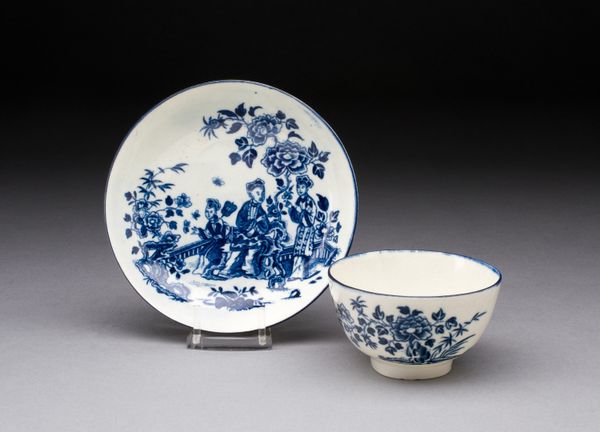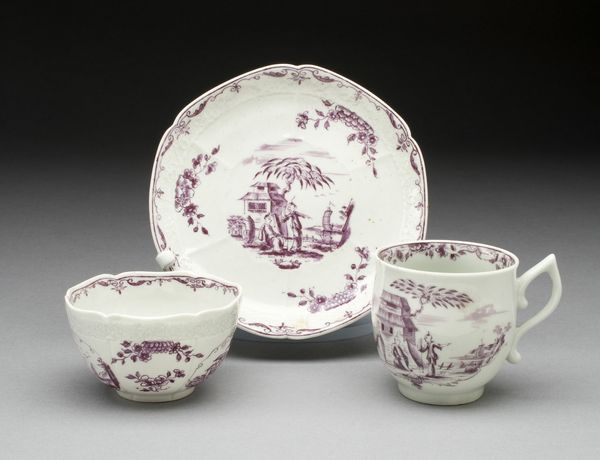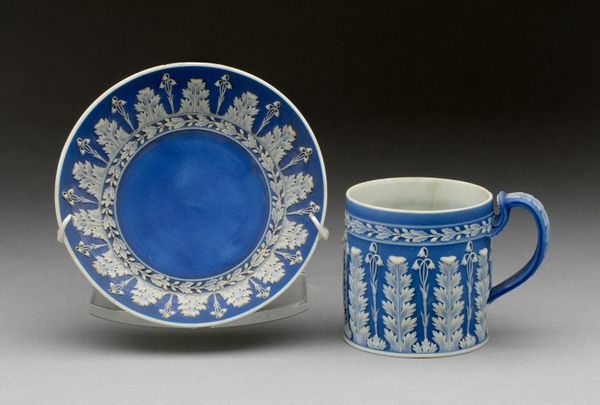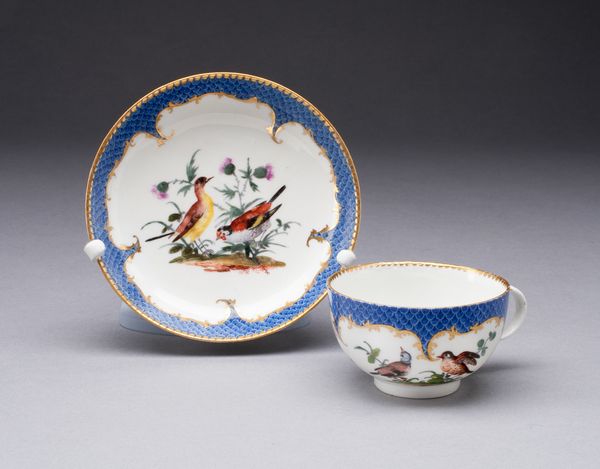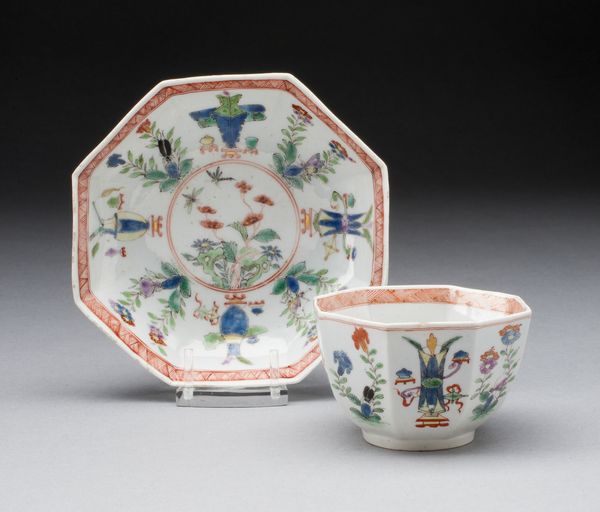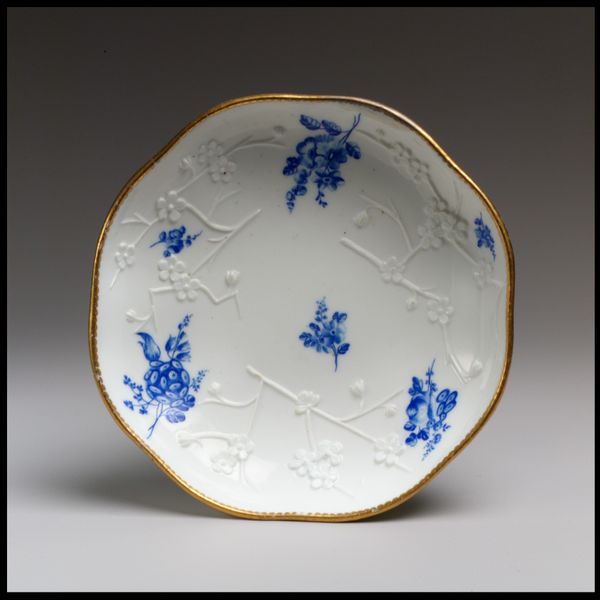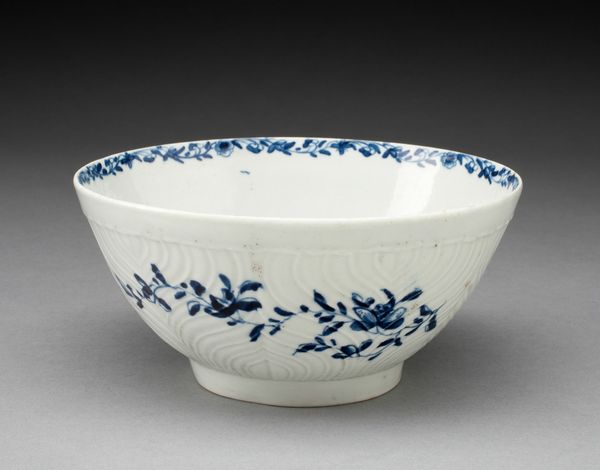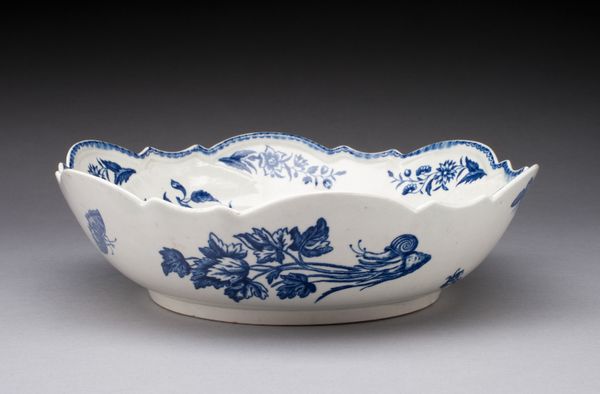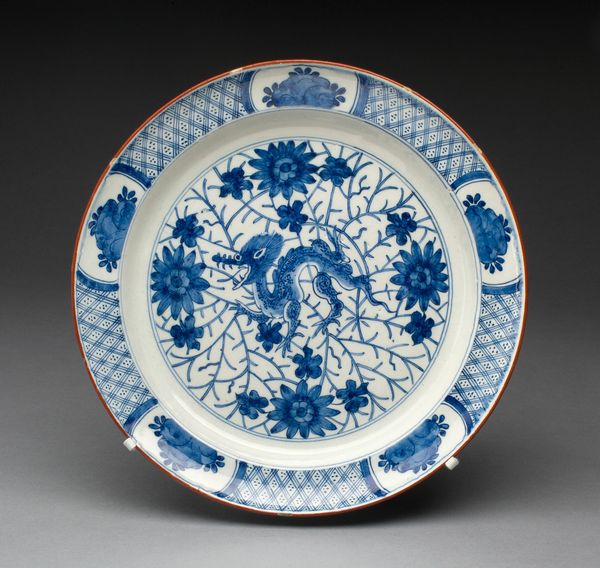
ceramic, porcelain, ink, inorganic-material
#
product photograph merchandise
#
egg art
#
3d printed part
#
jewellry advertising photography
#
war
#
product fashion photography
#
ceramic
#
porcelain
#
culinary art
#
vessel
#
ink
#
stoneware
#
inorganic-material
#
ceramic
#
nostalgic styling
#
decorative-art
#
disk design
Dimensions: Cup: H. 4.4 cm (1 3/4 in.); diam. 7.6 cm (3 in.) Saucer diam. 12.4 cm (4 7/8 in.)
Copyright: Public Domain
Editor: Here we have "Cup and Saucer," dating back to around 1775 and crafted by the Worcester Royal Porcelain Company. It’s porcelain with some kind of ink decoration, residing here at the Art Institute of Chicago. I’m struck by the simple, elegant design. The blue floral pattern against the white porcelain feels so classic and refined. How does its historical context influence your view of this piece? Curator: It's a deceptively simple object, isn't it? Considering the time it was made, the social status attached to owning fine porcelain like this cannot be understated. Porcelain production in Europe, particularly in England with companies like Worcester, signified a shift in consumer culture. Owning delicate objects was a marker of wealth and taste, a public declaration of one’s place within a hierarchical society. Have you thought about how this seemingly innocuous teacup played a role in social rituals? Editor: That's a great point! Tea ceremonies, I imagine, became stages for demonstrating social standing. Was the specific imagery relevant at all, beyond being merely decorative? Curator: Absolutely. The floral designs, though seemingly generic to us today, often alluded to specific tastes, affiliations, and sometimes even political leanings within aristocratic circles. Consider also that tea itself was an imported commodity tied to the complexities of colonial trade, and how consumer habits in England were sustained by and deeply implicated in systems of power and labor across continents. Editor: It’s fascinating how a single teacup can be a lens through which to examine broader social structures and trade dynamics of the 18th century. I wouldn't have thought about the colonial connection on my own. Curator: Exactly! This "Cup and Saucer" serves as a quiet yet powerful reminder of the socio-political forces that shaped not only artistic production, but also daily life for those who could afford such luxuries. Every sip of tea then was a quiet endorsement of the status quo. Editor: Wow. So looking at everyday objects gives a completely new perspective of social History, food for thought! Thanks!
Comments
No comments
Be the first to comment and join the conversation on the ultimate creative platform.
